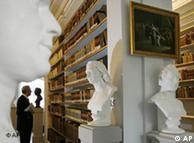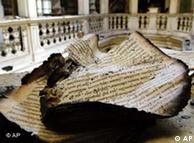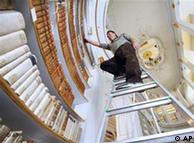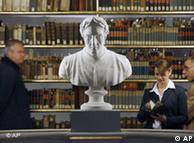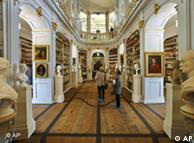2007年9月9日 星期日
Passé
Are Books Passé? Web Giants Envision the Next Chapter
By BRAD STONE
Two new offerings this fall — including an electronic book reader from Amazon.com — will test if consumers are ready to leave the paper book behind.
We're asking some leading specialists in Six Sigma, Lean and Op Ex to comment on the recent Business Week article that concluded Six Sigma was passe and "wrong" for innovation-based companies (which would, of course, include pharma).
passé 
















 Hide phonetics
Hide phonetics
adjective DISAPPROVING過ぎ去った、過去の
no longer fashionable:
Wines from that region were quite popular for a while, but now they're rather passé.
(from Cambridge Advanced Learner's Dictionary)
Gay Enclaves Face Prospect of Being Passé

These are wrenching times for San Francisco’s historic gay village and others like it across the nation.
SAN FRANCISCO, Oct. 24 — This Halloween, the Glindas, gladiators and harem boys of the Castro — along with untold numbers who plan to dress up as Senator Larry E. Craig, this year’s camp celebrity — will be celebrating behind closed doors. The city’s most popular Halloween party, in America’s largest gay neighborhood, is canceled.
Multimedia
Readers’ Opinions
Share Your Thoughts
How important do you think gay neighborhoods are for the gay community?
Related
Changes in the Number of Same-Sex Unmarried Partners in the 50 Largest American Cities (From Dr. Gary J. Gates of U.C.L.A.)
The once-exuberant street party, a symbol of sexual liberation since 1979 has in recent years become a Nightmare on Castro Street, drawing as many as 200,000 people, many of them costumeless outsiders, and there has been talk of moving it outside the district because of increasing violence. Last year, nine people were wounded when a gunman opened fire at the celebration.
For many in the Castro District, the cancellation is a blow that strikes at the heart of neighborhood identity, and it has brought soul-searching that goes beyond concerns about crime.
These are wrenching times for San Francisco’s historic gay village, with population shifts, booming development, and a waning sense of belonging that is also being felt in gay enclaves across the nation, from Key West, Fla., to West Hollywood, as they struggle to maintain cultural relevance in the face of gentrification.
There has been a notable shift of gravity from the Castro, with young gay men and lesbians fanning out into less-expensive neighborhoods like Mission Dolores and the Outer Sunset, and farther away to Marin and Alameda Counties, “mirroring national trends where you are seeing same-sex couples becoming less urban, even as the population become slightly more urban,” said Gary J. Gates, a demographer and senior research fellow at the University of California, Los Angeles.
At the same time, cities not widely considered gay meccas have seen a sharp increase in same-sex couples. Among them: Fort Worth; El Paso; Albuquerque; Louisville, Ky.; and Virginia Beach, according to census figures and extrapolations by Dr. Gates for The New York Times. “Twenty years ago, if you were gay and lived in rural Kansas, you went to San Francisco or New York,” he said. “Now you can just go to Kansas City.”
In the Castro, the Gay, Lesbian, Bisexual, Transgender Historical Society held public meetings earlier this year to grapple with such questions as “Are Gay Neighborhoods Worth Saving?”
With nine major developments planned for Market Street, including a splashy 113-unit condominium designed by Arquitectonica, anxiety about the future is swirling. Median home prices hover around $870,000. Local institutions like Cliff’s Variety, a hardware store selling feathered boas (year-round) are not about to vanish from this storied homeland of the gay rights movement. But the prospect of half-million-dollar condos inhabited by many straight people underscores a demographic shift.
“The Castro, and to a lesser extent the West Village, was where you went to express yourself,” said Don F. Reuter, a New York author who is researching a book on the rise and fall of gay neighborhoods, or “gayborhoods.”
“Claiming physical territory was a powerful act,” Mr. Reuter said. “But the gay neighborhood is becoming a past-tense idea.”
In the Castro, the influx of baby strollers — some being pushed by straight parents, some by gay parents — is perhaps the most blatant sign of change. “The Castro has gone from a gay-ghetto mentality to a family mentality,” said Wes Freas, a broker with Zephyr Real Estate. The arrival of a Pottery Barn down the street from the birthplaces of the AIDS quilt and the Rainbow Flag is a nod to change.
Sakura Ferris, a 28-year-old mother of a toddler, moved to the Castro because she liked its new eclecticism. At the Eureka Valley Recreation Center, a parent hot spot rife with Froggie pull-toys, Ms. Ferris’s tot mingles with infants in onesies that read, “I Love My Daddies.”
The Castro remains a top tourist destination for gay and lesbian visitors. But Joe D’Alessandro, president and C.E.O. of the San Francisco Convention and Visitors’ Bureau, and a gay parent who lives in the Castro, predicted that eventually the neighborhood would go the way of North Beach, “still a historic Italian neighborhood though Italians don’t necessarily live there anymore.”
The Castro became a center for gay liberation in the late 1960s and early 1970s in a declining Irish Catholic and Scandinavian neighborhood. At its helm was Harvey Milk, the first openly gay city supervisor in San Francisco whose slaying in 1978 by a disgruntled former supervisor, Dan White, galvanized the community and set off riots when White was convicted of manslaughter instead of murder.
Decimated during the AIDS epidemic of 1990-1995, the neighborhood rebounded in the boom economy of the late 1990s. But the social forces that gave rise to the Castro and other gay neighborhoods like the West Village and West Hollywood may be becoming passé.
While the state’s Eighth Congressional District, which includes the Castro, saw an increase of about 20 percent in the number of same-sex couples from 2002 to 2006, surrounding districts had a 38 percent increase in same-sex couples, according to Dr. Gates.
In West Hollywood, another traditional gay haven, the graying of the population and the high cost of real estate have resulted in once-gay watering holes like the Spike and the I Candy Lounge going hetero. A new kind of gentrification is under way in which young gay waiters and school teachers move instead to Hollywood and other surrounding neighborhoods. “We often clamored for equality where gay and straight could coexist,” said Mayor John Duran of West Hollywood, who is gay. “But we weren’t prepared to give up our subculture to negotiate that exchange.”
While the Castro has been the center of a movement, it is also home to “an important political constituency,” said Elizabeth A. Armstrong, an associate sociology professor at Indiana University and the author of “Forging Gay Identities: Organizing Sexuality in San Francisco 1950-1994”
“When people were angry about Dan White they were able to assemble quickly, spilling out of the bars,” Professor Armstrong said. “Physical location mattered.”
The Castro still has the city’s largest progressive Democratic organization, the Harvey Milk Club. A survey of registered voters earlier this year by David Binder, a San Francisco political analyst, found that 33 percent of the Eighth District identified themselves as gay or lesbian, compared with 13 percent citywide.
The Castro’s activist legacy continues to exert a strong emotional pull: the corner of 18th and Castro Streets, where Harvey Milk; Diana, Princess of Wales; and Matthew Shepard were mourned and where gay marriage was fleetingly celebrated, is for many a mythic homeland.
Amanda Rankin, a 40-year-old tourist from Hamilton, Ontario, was taking a “Cruisin’ the Castro” walking tour with three lesbian friends the other day.
“In America there still seems to be a lot of sexual repression left over from Puritanism and the pilgrims,” Ms. Rankin said. “Then there’s San Francisco.”
But its legacy has not prevented the neighborhood from harsh urban realities. As San Francisco real estate skyrocketed in the 1990s, the Castro had the city’s highest concentration of evictions, as speculators “flipped” buildings, many of them housing people with disabilities and AIDS, to convert to market-rate apartments, said Brian Basinger, the founder of the AIDS Housing Alliance.
Even before Halloween, the Castro was grappling with violence and crime. Allegations of racial profiling at the Badlands, the neighborhood’s most popular bar, led to a widespread boycott in 2005 and intervention by the city’s Human Rights Commission.
The highly publicized rape of a man in the Castro in September 2006 led to the formation of Castro on Patrol, a whistle-wielding citizens’ street brigade. In that attack, Mark Welch was raped five blocks from a store he managed on Castro Street. He said in that he later learned there had been two previous similar rapes in the neighborhood, but that had not been widely reported.
He said it took months for it to surface on a sex-crimes Web site maintained by the authorities. There are signs that the dispersing of gay people beyond the Castro vortex and the rise of the Internet are also contributing to a declining sense of community. An annual survey by the San Francisco Gay Men’s Community Initiative indicated that in 2007 only 36 percent of men under 29 said there was a gay community in the city with which they could identify.
Doug Sebesta, the group’s executive director and a medical sociologist at the San Francisco Department of Public Health, said, “I’ve had therapists who have told me they are asking their clients to go back to bars as a way of social interaction.”
The Internet is not a replacement for a neighborhood where people are involved in issues beyond themselves, said John Newsome, an African-American who co-founded the group And Castro For All after the Badlands incident. “There are a lot of really lonely gay people sitting in front of a computer,” he said.
Which is why the cancellation of the Halloween party by the city has provoked such a sense of loss. Many residents say that their night has been taken away. “It’s proof that whatever sense of safety we have is incredibly tenuous, “ Mr. Newsome said.
The city is shutting down public transportation to the Castro on Halloween and has begun a Web site, homeforhalloween.com, that lists “fun” alternatives, including a Halloween blood drive and a “Monster Bash” — in San Mateo.
On a recent Saturday, Sister Roma, a member of the Sisters of Perpetual Indulgence, an activist coterie of drag queens, sashayed down Castro Street in heavy eye shadow and a gold lamé top. Though she looked well prepared for Halloween, she said she planned to be in hiding that night.
She wasn’t feeling too deprived, however.
“Sweetie,” she said, “every day is Halloween in the Castro.”





